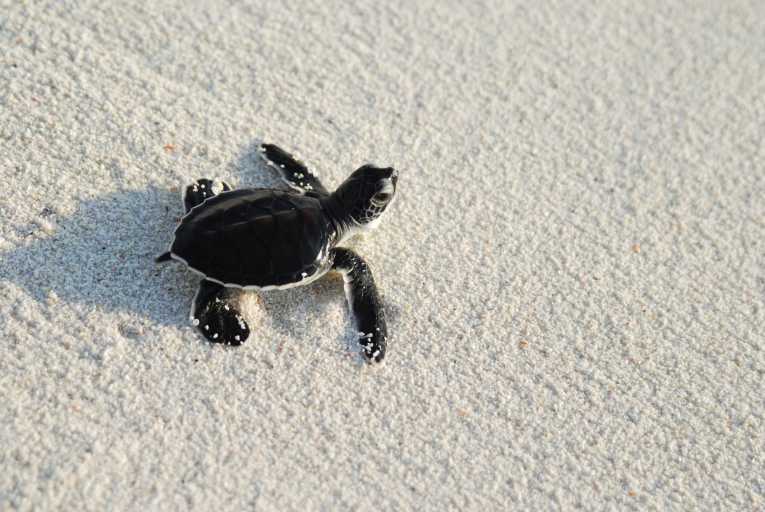While for the Chinese 2011 is the Year of the Rabbit, for an international group of conservationists it is the Year of the Turtle. For, after some 220 million years of being on the planet, around half of all species are now under threat from a range of man-made problems.
A number of recent studies have helped bring the extent of the problem into focus. For example, it is now known that around 50 per cent of freshwater turtle species are under threat, more than any other specific animal group. Additionally, since the temperature of nests can determine the sex of offspring, climate change is causing marked gender discrepancies in several parts of the world, thereby reducing rates of reproduction.
But, as the team behind this year-long drive are keen to point out, it's not just the turtles themselves that are at risk. Both sea turtles and their land-dwelling cousins - also known as tortoises - play a central role in their respective habitats. Not only do tortoises help keep grasses short and healthy, but they also serve as an important food source for a number of predators. Likewise, sea turtles graze on the grasses found on the sea floor, thereby maintaining a healthy breeding ground for fish and crustaceans.
More-broadly speaking, turtles also have great significance outside of the direct food chain, as Deanna Olson, a research ecologist and co-chair of the Partners in Amphibian and Reptile Conservation (PARC), which is behind the Year of the Turtle campaign, argues.
"Turtles are centrally nested in the food web and are symbols of our natural heritage. They hold a significant role in many cultures. For example, in many southeast Asian cultures turtles are used for food, pets, and medicine," she says.
In short, much is at stake if these reclusive animals were to be lost forever, hence this new injection of urgency into a long-standing ecological concern. So, what needs to be done to safeguard turtle populations around the world? Well, according to PARC, while there are many longer-term solutions, some simple steps can still be taken, both by governments and individuals, to alleviate the plight of at-risk species.
For example, in North America - where around 20 per cent of the world's turtle species are to be found - affordable and easy safeguards such as tunnels under busy highways, taking extra care when using farm machinery or ensuring the fishing industry uses turtle-friendly nets could make a world of difference. Meanwhile, on a global scale, scientists argue that improved eco-crisis management systems, such as responses to oil spills, could also play a key role in bringing some of the rarest turtle species back from the brink.
Certainly, the Year of the Turtle would appear to have come at a point when prospects for populations worldwide are improving markedly. Just this week, for example, the New Scientist magazine reported that La Escobilla beach, situated on Mexico's Pacific Coast and considered to be the largest sea turtle nesting site in the world, now plays host to around 1.4 million nesting females each season, compared to around 140,000 just a couple of decades ago. But, as PARC notes, while the global 'turtle heritage' can still be salvaged, there is much still to be done, not least addressing the longer-term threats of climate change and habitat loss and degradation. Though they may have been around since the age of the dinosaurs, without affirmative action, turtles could yet be consigned to a footnote in the earth's ecological history in the space of just a few decades.










